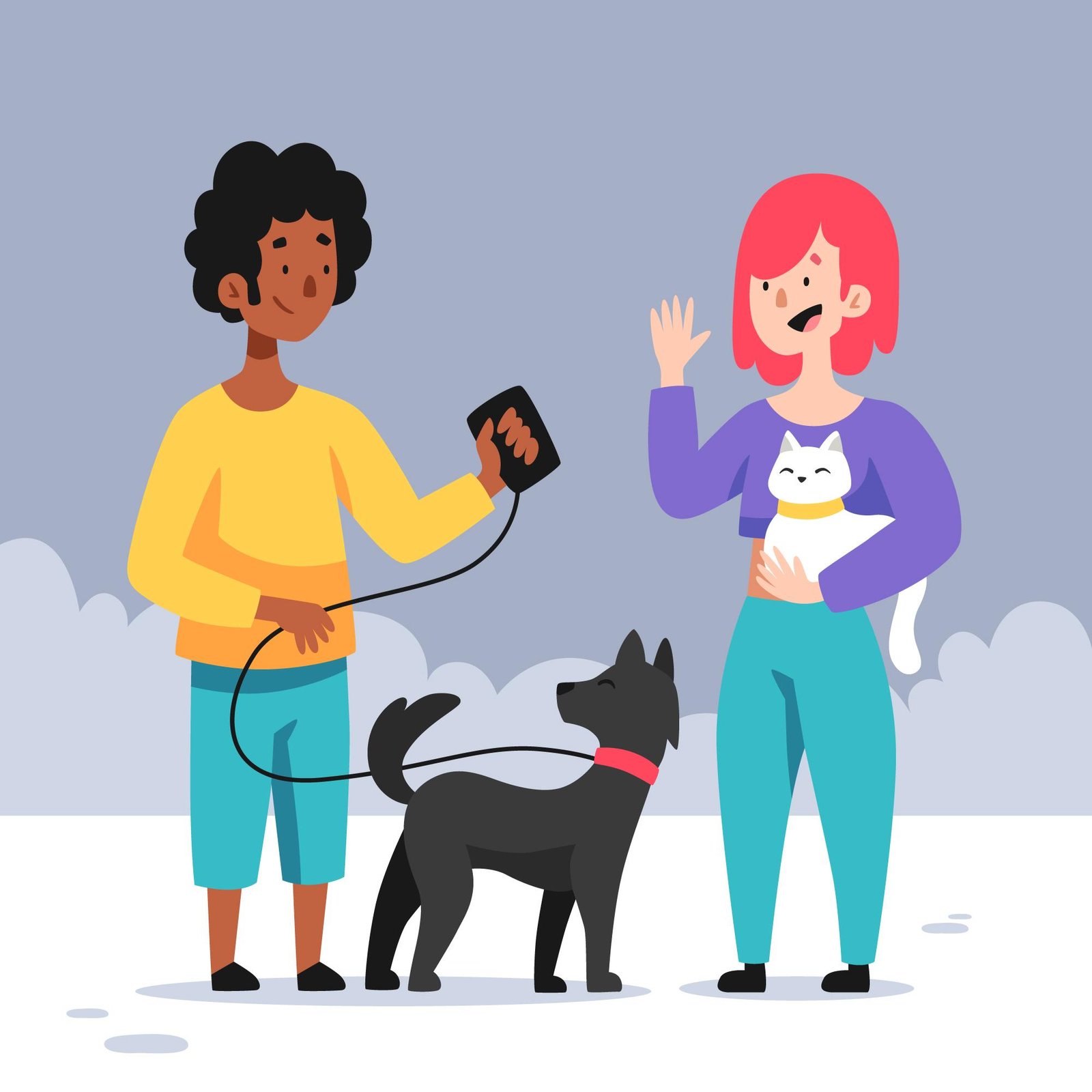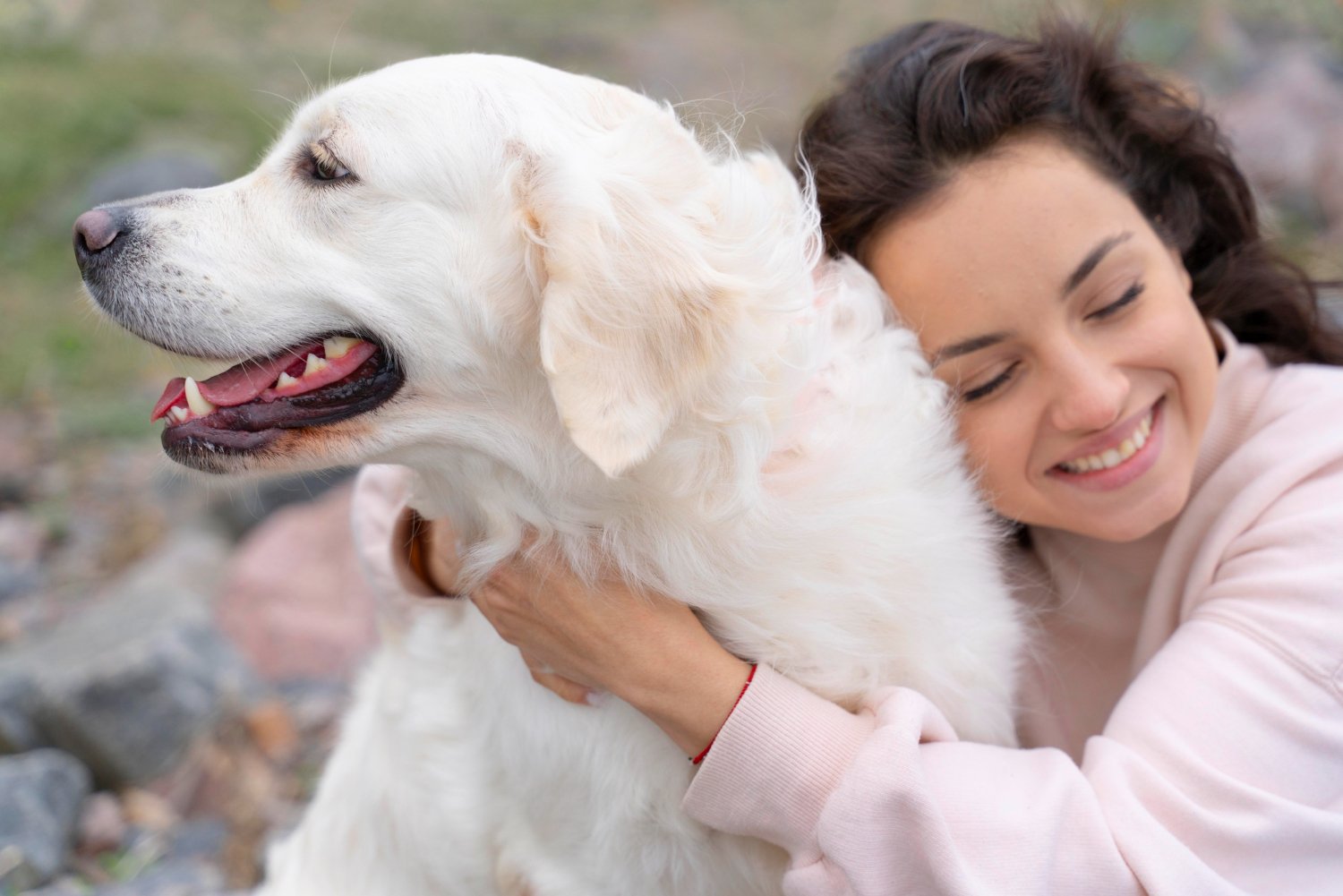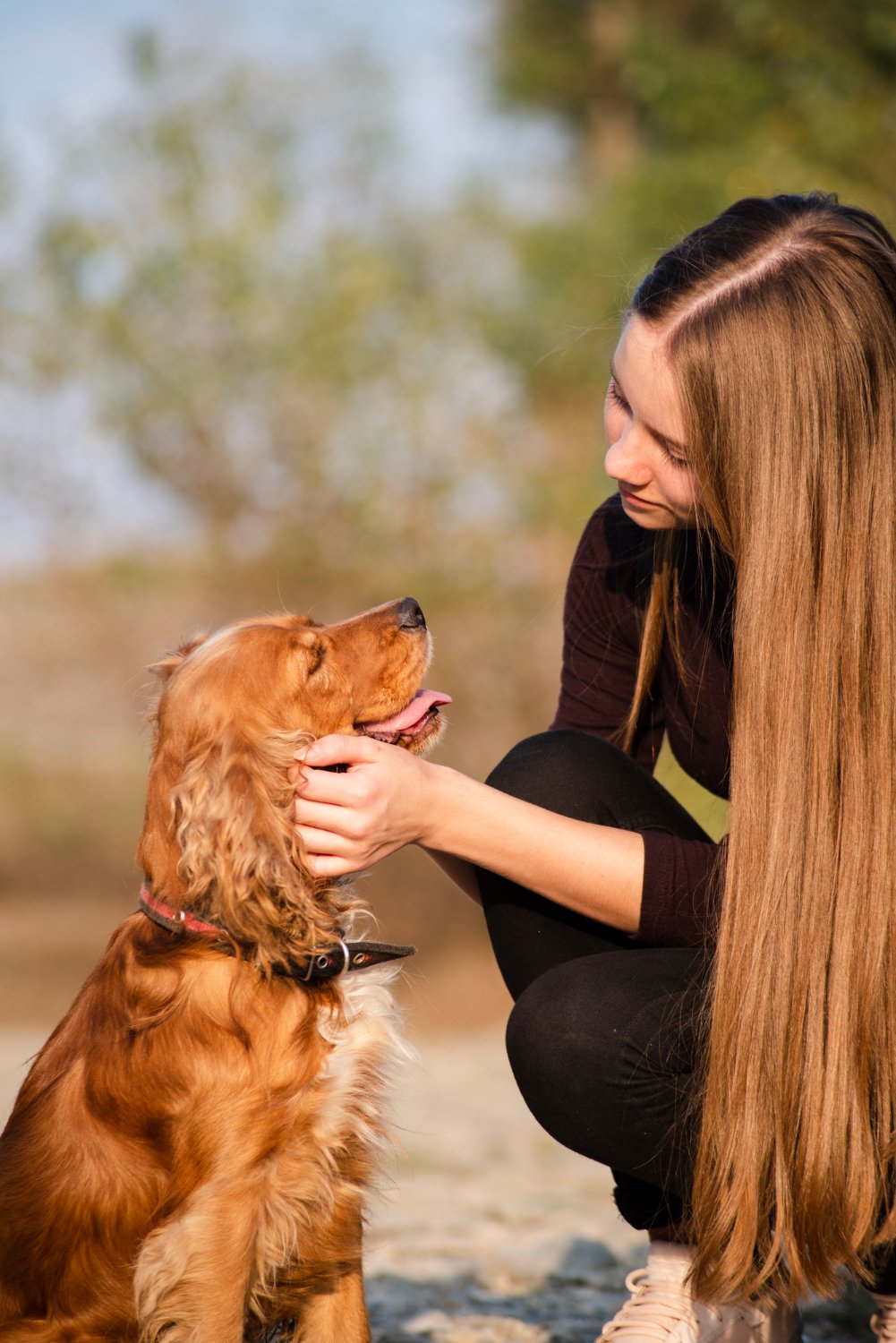Pet Influencers
Pet influencers, the captivating stars of the digital age, have taken the online world by storm with their adorable antics and heartwarming moments. From Instagram to TikTok, these furry celebrities have amassed millions of followers, enchanting audiences worldwide with their unique charm and undeniable charisma. In this digital landscape, where content reigns supreme, pet influencers have carved out a niche all their own, offering a glimpse into the joys and challenges of pet ownership while spreading smiles and warmth across the internet. Join us as we explore the enchanting world of pet influencers, where every paw print tells a story and every wag of the tail brings joy to millions.

From Likes to Love: The Rise (and Challenges) of Pet Influencers
In recent years, the rise of pet influencers has taken the internet by storm, captivating audiences worldwide with their adorable antics and heartwarming moments. But behind the likes and shares lie a world filled with both joy and challenges, offering valuable insights for both pet owners and those aspiring to become pet influencers.
Exploring the Fascinating World of Pet Influencers
Pet influencers have become celebrities in their own right, with millions of followers hanging onto their every post. From playful puppies to sophisticated cats, these furry stars have charmed their way into the hearts of people around the globe, showcasing the unique bond between humans and animals.
Navigating the Joys and Struggles of Pet Influencing
While being a pet influencer may seem like a dream job, it comes with its fair share of challenges. From maintaining a balance between pet wellbeing and content creation demands to navigating brand collaborations and dealing with creative burnout, pet influencers face a myriad of obstacles on their journey to online stardom.
Practical Takeaways for Pet Owners and Aspiring Petfluencers
For pet owners, the world of pet influencing offers valuable lessons in building a stronger bond with their furry companions. From positive reinforcement training techniques to capturing lasting memories through photos and videos, there’s much to learn from the strategies employed by pet influencers.
Aspiring pet influencers, on the other hand, can glean insights from the experiences of those who have paved the way before them. By understanding the challenges and strategies of successful pet influencers, aspiring creators can embark on their own journey with a clearer understanding of what it takes to succeed in this competitive landscape.
The rise of pet influencers has brought joy, inspiration, and a sense of community to animal lovers around the world. While challenges undoubtedly exist, the rewards of sharing the love and companionship of our furry friends on a global scale are immeasurable. Whether you’re a pet owner looking to strengthen your bond with your furry companion or an aspiring pet influencer ready to make your mark on the world, the journey from likes to love is filled with endless possibilities.

The Allure of Petfluencers: Why We Can't Get Enough
In today’s digital age, our social media feeds are often flooded with adorable pets captivating our attention. But what exactly is it about these furry influencers that keeps us coming back for more?
Beyond the Cuteness: The Emotional Connection (Why We Follow)
The allure of pet influencers extends far beyond their undeniable cuteness. It’s the emotional connection they evoke that truly captures our hearts. Studies have shown that interacting with pets, even virtually, can boost our mood and reduce stress levels. Whether it’s a heartwarming moment or a burst of laughter from their antics, pet content has a unique ability to brighten our day.
The Science Behind Our Love for Pet Content
Our fascination with pet content isn’t just a coincidence – it’s backed by science. Research suggests that viewing images and videos of animals can activate the same neural pathways associated with love and bonding. This explains why we feel such a strong connection to these furry influencers, even if we’ve never met them in person.
Finding Joy and Humor in Everyday Pet Moments
From playful puppies to mischievous cats, pet influencers remind us to find joy in the simple moments of life. Whether they’re chasing their tails or getting into harmless mischief, these furry companions have a knack for putting a smile on our faces. In a world filled with stress and uncertainty, pet content serves as a lighthearted escape, offering a much-needed dose of happiness.

Living the Dream? The daily routine of a pet influencer
Have you ever wondered what it’s like to be a pet influencer? Behind the adorable photos and heartwarming videos lies a world of hard work and dedication.
Behind the Scenes: Photoshoots, Training, and Content Creation
Contrary to popular belief, being a pet influencer is more than just cuddles and playtime. Behind every post is hours of preparation, from photoshoots to training sessions. Pet owners-turned-influencers often spend countless hours perfecting their craft, ensuring that each piece of content is engaging and authentic.
The Work-Life Balance with a Furry Co-star
Maintaining a healthy work-life balance can be challenging when your furry friend is also your co-star. Pet influencers juggle the demands of their online presence with the responsibilities of pet ownership, ensuring that their four-legged companions are happy and healthy both on and off camera.
The allure of pet influencers lies in their ability to evoke emotional connections, spread joy, and provide a lighthearted escape from the stresses of everyday life. Behind the scenes, pet influencers work tirelessly to create engaging content while balancing the demands of pet ownership. So the next time you find yourself scrolling through your feed, take a moment to appreciate the furry influencers who brighten our days one adorable post at a time.
Beyond the Likes: Challenges Faced by Pet Influencers
Being a pet influencer may seem like a dream job, but behind the scenes, there are numerous challenges that influencers face.
Striking a Balance: Pet Wellbeing vs. Content Creation Demands
While creating engaging content is important, pet influencers must prioritize the wellbeing of their furry friends. This involves recognizing signs of stress and setting boundaries to ensure that animals are comfortable and ethically treated at all times.
The Pressure to Perform: Staying Fresh and Engaging in a Crowded Space
In an increasingly crowded space, pet influencers face the pressure to stay relevant and engaging. Dealing with creative burnout and adapting to algorithm changes are constant challenges. However, finding a unique niche and staying true to one’s authentic voice can help influencers stand out amidst the competition.
From Followers to Financials: The Business of Being a Pet Influencer
Turning pet influencing into a sustainable business involves more than just gaining followers. Pet influencers must navigate brand collaborations, negotiate fair compensation, and understand the business side of their online presence. This includes building a loyal and engaged audience that attracts brands aligned with their values.

Finding the Right Fit: Brand Collaborations and Ethical Considerations
When collaborating with brands, pet influencers must carefully consider ethical considerations. Aligning with brands that share their values is crucial, as is understanding contracts and ensuring fair compensation for their work.
Watch Out for Woofs!: Fake Followers and the Dark Side of Petfluencing
As in any industry, pet influencers must be vigilant against fake followers and inauthentic engagement practices. Building a genuine community of followers is essential for long-term success and credibility in the world of pet influencing.
While being a pet influencer may come with its perks, it also presents a unique set of challenges. From prioritizing pet wellbeing to navigating brand collaborations and staying authentic in a crowded space, pet influencers must overcome various hurdles to thrive in their industry. By staying true to their values and building genuine connections with their audience, pet influencers can create a sustainable and fulfilling career in the world of online pet content.
From Fan to Friend: Practical Tips for Pet Owners Inspired by Influencers
Pet influencers have a unique ability to build genuine communities around their furry friends. As a pet owner, you can learn valuable lessons from these influencers on how to strengthen your bond with your pet and create lasting memories together.
Building a Bond: Training and Positive Reinforcement
One of the key techniques used by pet influencers is positive reinforcement training. This involves rewarding good behavior to encourage it to continue. By incorporating positive reinforcement techniques into your training sessions, you can create a strong foundation for a happy and well-behaved pet. Techniques such as clicker training and using treats can help reinforce desired behaviors and strengthen the bond between you and your furry companion.
Capture the Moments: Creating Memories with Your Pet
Pet influencers excel at capturing the special moments they share with their pets, and you can do the same. With simple tips for taking captivating photos and videos, you can turn everyday moments into lasting pet memories. Whether it’s a playful romp in the park or a cuddle session at home, having a camera handy allows you to capture these precious moments and cherish them for years to come.
By learning from pet influencers and implementing their techniques, you can strengthen the bond with your pet and create unforgettable memories together. Whether through positive reinforcement training or capturing special moments on camera, embracing the lessons of pet influencers can enhance the joy and companionship you share with your furry friend.
The Power of PAWS: The Positive Impact of Pet Influencers
In the realm of social media, pet influencers hold a unique power to spread positivity and make a difference in the world. Their platforms not only entertain but also serve as vehicles for advocacy, community building, and raising awareness on important pet-related issues.
Advocacy and Awareness: Using Your Platform for Good
Pet influencers are more than just adorable faces on our screens – they are advocates for responsible pet ownership and animal welfare. Through their platforms, they promote the importance of adopting pets from shelters and rescue organizations, highlighting the joy and fulfillment that comes from giving a furry friend a forever home. By using their influence for good, pet influencers play a vital role in reducing pet homelessness and promoting animal welfare.
Building a Community: Connecting with Other Pet Lovers
Beyond their advocacy work, pet influencers foster a sense of community among pet lovers around the world. Through online forums, social media groups, and local meetups, pet owners connect with like-minded individuals, sharing experiences and learning from one another. These communities provide a support system for pet owners, offering advice, encouragement, and friendship along the way.
Pet influencers wield a powerful influence that extends far beyond cute photos and videos. By leveraging their platforms for advocacy and building communities of pet lovers, they make a positive impact on the world and inspire others to do the same. Through their efforts, pet influencers are truly changing the world one paw at a time.
Conclusion
The world of pet influencers offers a fascinating glimpse into the bond between humans and animals, showcasing the joys, struggles, and practical takeaways for both pet owners and aspiring pet influencers. As we navigate the challenges of pet influencing, from balancing content creation demands to advocating for responsible pet ownership, it’s clear that these furry stars play a significant role in shaping our online communities and spreading positivity worldwide. Whether you’re a pet owner seeking to strengthen your bond with your furry companion or an aspiring pet influencer ready to embark on your journey, the opportunities to connect, inspire, and make a difference are endless in this vibrant and ever-evolving landscape of pet influence.
FAQ's
What is a pet influencer?
How do pet influencers gain popularity?
Are pet influencers profitable?
Do pet influencers have a positive impact?
What are the challenges faced by pet influencers?
How can I become a pet influencer?
Are there ethical considerations for pet influencers?
Join us on another social media platforms:






















